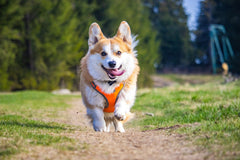
A Summer Guide to Heat Stress and Heat Stroke for Dog Owners
Heatstroke and Heat Stress in dogs is a severe, life-threatening condition that pet parents in India need to be aware of, especially with the scorching heat of the Indian summer upon us. Knowing the symptoms, causes, prevention, and treatment options is essential for ensuring the safety and health of your dog.
In the world of dog heat-related conditions, heat stroke is the most severe and deadly. According to some medical studies, only about half of the dogs that suffer from heatstroke survive. Heat stress in dogs occurs when a dog’s body temperature becomes dangerously high due to high external temperatures. Dogs cannot sweat and cool themselves, unlike humans. Instead, they cool themselves by panting, which causes moisture to evaporate from their mouths and nostrils. However, according to Badhran, this is often not enough, and dogs end up being at a higher risk of heatstroke than humans, particularly in India, with its steamy and prolonged summer.

Pet lovers should be aware of the early signs of heat-related illnesses and know what to do if their pet becomes ill, including heat cramps or spasms, as well as dehydration or loss of electrolytes. Do not wait to see if the symptoms subside; if you suspect your pet is suffering from dog stroke or heatstroke, go immediately to the nearest veterinarian.
What is Heatstroke in Dogs?
Heatstroke is the most severe type of hyperthermia, posing a serious and frequently fatal health danger to dogs. Heatstroke is a medical disorder in which a dog in heat symptoms, including a rise in body temperature above 106°F (41°C) without any preceding signs of illness, typically caused by sun exposure or other environmental factors.
In severe cases, a dog's temperature can increase to between 107°F and 109°F (41.7 °C and 42.7 °C), causing irreversible damage to vital organs, including the central nervous system, heart, liver, gastrointestinal tract, kidneys, and coagulation system. When dogs on heat do not have access to water, shade, or rest on an extremely hot day, heatstroke can swiftly overwhelm the body's defenses, potentially leading to death. It is an exceedingly severe problem that requires emergency veterinary attention. If you suspect your dog is suffering from heatstroke, take them to the clinic immediately for treatment.
Signs of Heatstroke in Dogs
New pet parents may struggle to recognize the symptoms of heatstroke in their dogs. Here are some signs to look for:
- Excessive panting and drooling
- Unresponsiveness
- Dry and reddened gums/mucous membranes
- Rapid heart rate
- Dehydration
- High temperature (104°F and above)
- Vomiting
- Diarrhoea
- Disorientation
- Weakness or lethargy
- Seizures
If you notice any of these dog in heat symptoms, take immediate action to avoid further complications.
Dog Breeds More Likely to Get Heatstroke
As previously stated, dogs on heat are more susceptible to heatstroke than people since they are unable to release heat through sweating. Certain breeds, particularly those with flat faces (brachycephalic breeds), such as Pugs, Bulldogs, Shih Tzus, Boxers, and Mastiffs, are more susceptible to heatstroke because they frequently struggle to regulate their body temperature adequately.
Older dogs, particularly those who are elderly or overweight, are more susceptible to heatstroke than their younger counterparts.
To reduce the risk of heatstroke, keep kids indoors in cool conditions all day. Avoid walking your dog during peak heat hours; instead, go for walks early in the morning or late in the evening, after sunrise or before sunset.
Causes of Heatstroke in Dogs
Remember, if the temperature is hot for you, it will be significantly hotter for your pet. Here are two typical conditions that might lead to heat stress in dogs:
- Dogs Left Inside a Car for Extended Periods, Even on Pleasant Weather Days: According to a recent study, the temperature inside a car can rise by about 5 degrees Celsius every hour. Even if the outside temperature is 27°C, the interior of a car can quickly rise to 32°C in an hour. As a result, never leave a dog unsupervised inside a car, even if the windows are partially open or the weather appears comfortable.
- Exercising the Dog on Hot, Humid Days: Exercising your dog throughout the summer requires prudence because they are prone to dog stroke, even on short walks. It is best to engage in outdoor activities early in the morning or late at night when temperatures are lower. Additionally, make sure your dog has access to plenty of fresh water to stay hydrated.
Being aware of these risks will help you prevent heat stress in dogs.
Treatment for Heatstroke in Dogs
In severe circumstances, your dog may require hospitalization and intravenous fluids to counteract dehydration. The veterinary team will closely monitor your dog's mental state, temperature, blood pressure, heart rate, and breathing rate. Depending on the severity, drugs and hydration fluids will be given to treat symptoms like vomiting, diarrhea, possible infections, brain swelling, and seizures.
Plasma transfusions, low-concentration oxygen therapy, and anti-arrhythmic medicines are all potential treatment options. An electrocardiogram may be performed, along with further blood testing, to monitor any changes and guide ongoing treatment.
Pet owners must understand that dog stroke therapy is not optional, but necessary. Your dog's health and well-being may be jeopardized if medical attention is not sought immediately.

Daily Tips to Prevent Heatstroke in Dogs
As the saying goes, "prevention is better than cure." As a result, it is crucial to exercise caution, especially in hot weather. Here are some preventive actions that every pet parent should take to avoid heat stress in dogs:
- Reserve Outdoor Time for Cooler Hours: Take your dogs on heat outside at cooler times of the day, such as early morning before sunrise or late evening after sunset. Even short walks in extremely hot and humid conditions might result in heatstroke in vulnerable dogs.
- Ensure Access to Shade, Water, and Rest: When playing or exercising outside, always provide your pet with shade, freshwater, and adequate rest.
- Keep your pets indoors on hot days: On hot days, keep your pet indoors in an air-conditioned setting, especially if they have risk factors such as old age, brachycephalic syndrome, obesity, heart disease, tracheal collapse, or laryngeal paralysis.
- Never Leave Your Dog Unattended in a Car: Regardless of the weather, never leave your dog unattended in a car. Even with open windows and sheltered parking, a car's inside can quickly get more than 40°F hotter than the outside temperature.
- Regular Grooming: Keep your dog cool in the summer by bathing them regularly. Professional grooming sessions can help dogs maintain a healthy coat length, which is especially advantageous for long-haired breeds. Avoid zero cuts or shaves in the summer, as lengthy hair provides cool air pockets and helps regulate your pet's body temperature.
Following these preventive steps will considerably lower the risk of dog stroke while also ensuring your dog's safety and well-being.
Heatstroke in dogs is a dangerous and even fatal condition. Understanding the indications, causes, preventive measures, and treatment choices provided in this guide allows pet parents to take proactive steps to safeguard and ensure the safety of their furry companions throughout the year. Remember that attention and early action are essential in preventing heat stress in dogs and keeping our beloved dogs on heat healthy and happy!
Goel phar: PREVENTO for Cattle – 100ml For Heat Stroke, Panting
PREVENTO for CATTLE is for large animals exhibiting panting due to sunstroke, heatstroke, excessive cold, or after recovering from foot-and-mouth disease.
Key Benefits of Homeopathic Medicines:
- The Counter (OTC) homeopathic medicine that works naturally.
- No side effects, no drug interactions, no contraindications.
- It can be safely used along with other medications.
- Drops work instantly when placed on the tongue
Keep Your Pets Safe This Summer with Goel Vet Pharma!
As temperatures soar, protecting your furry friends from heatstroke becomes crucial. At Goel Vet Pharma, we’re committed to helping pet owners recognize, prevent, and treat heat-related illnesses in dogs. From early warning signs, such as excessive panting, to emergency care, our expert veterinarians provide the best dog care solutions near you. Need immediate advice? Book a free online vet consultation or visit our veterinary clinic near me for expert guidance. Plus, explore our trusted PREVENTO for Cattle to manage heat stress in large animals. Don’t wait—ensure your pet’s safety this summer with Goel Vet Pharma’s reliable care and prevention tips!








